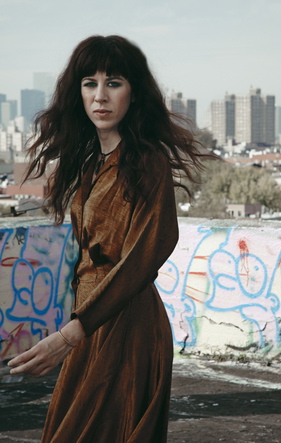Mazzoli work highlights season opener for Voices of Change

Missy Mazzoli’s “Set That on Fire” was performed by Voices of Change Sunday night at SMU.
American composer Missy Mazzoli’s Set That on Fire provided the provocative program theme as well as the artistic high point as Voices of Change opened its subscription season Sunday night at Southern Methodist University’s Caruth Auditorium.
Borrowing its title from a trope phrase of twentieth-century graffiti artist Jean-Michel Basquiat, Set That on Fire is a ten-minute sextet from 2013 for flute, trumpet, violin, clarinet, bass clarinet and piano. In spite of a title redolent of anarchy, Set That on Fire presents a tightly organized, almost deliberative structure; the composer’s program notes bespeak a sense of dedication, devotion, and creative sacrifice and risk-taking rather than of destruction or revolution.
Four main sections, “Tightly Wound,” “Relaxed, Dreamy,” “Rapturous,” and “Winding Down,” segue seamlessly through a series of musical adventures for a succinct, listener-accessible experiences, with constantly striking moments, occasional hints of minimalism, and an irresistible momentum.
The ensemble (Dallas Symphony members Maria Schleuming, Paul Garner and Chris Runk joined by Helen Blackburn, John Holt and Liudmila Georgievskaya) navigated the complexities of the score as well as the inherent challenges of a relatively large chamber ensemble with polish and precision. While there are dark moments, the general mood of this work in this performance was of lightness and energy.
The Mazzoli work provided the finale of a program that stretched over a huge and eclectic range of styles, beginning with American composer Charles Wuorinen’s Trio for flute, bass clarinet, and piano of 2008, with bass clarinetist Runk joining Dallas-based flutist Ebonee Thomas and pianist Gabriel Sanchez. The shadow of Schoenberg and 20th-century academicism looms large here, brightened with colorful instrumental effects in an unusual ensemble combination with snippets of introspective lyricism. Pianist Sanchez here led the energy and impetus, with a notably bright tone from Runk.
Armenian composer Arno Babadjanian’s Trio in F-sharp Minor for violin, cello, and piano from 1952 might as well have been written on a different planet from the works of Wuorinen and Mazzoli. The traditional ensemble as well as a conventional three-movement structure here provide the framework for a fully developed chamber work very much in the style of Rachmaninoff, complete with yearning melodies and hyper-romantic instrumental gestures.
Captivating from opening to close, this trio was particularly striking in the Andante middle movement, with a yearning violin tune floating over an undulating piano part. Only in the final section of the third movement did Babadjanian move slightly into the early twentieth century, with a dramatic and percussive quality reminiscent of his compatriot Khachaturian. Not surprisingly, since Babadjanian was a virtuoso pianist as well as composer, the piano tends to dominate, and Gerogievskaya provided the rich romantic tone of the Russian school here, set off against lighter timbres from DSO violinist Schleuming and cellist Kelli Kettering.
Yet another style angle emerged between the Babadjanian Trio and the Mazzoli work, with Japanese-born, Paris-based Yuko Uebayashi’s Suite for Flute and Cello from 2004. This set of six short but fully developed movements (including a Menuet and a Berceuse) surveys a post-impressionist, neo-baroque landscape. Cellist Kettering and flutist Helen Blackburn gave these often cheerful, almost hummable sketches a precise, expressive reading, with Blackburn’s solid tone a perfect match for Kettering’s lightly lyrical cello. Jollity, gentleness, and firm grasp of traditional harmony and counterpoint characterized the composition as a whole, which, while hardly ground-breaking, provides a pleasant addition to the chamber repertoire.
Voices of Change has been introducing new music to a small but intensely loyal audience (Sunday night’s crowd numbered at about forty) for nearly half a century. The sheer stylistic diversity of this concert created a strong sense of context as well as reminder of the wonderfully eclectic array of styles currently thriving.


